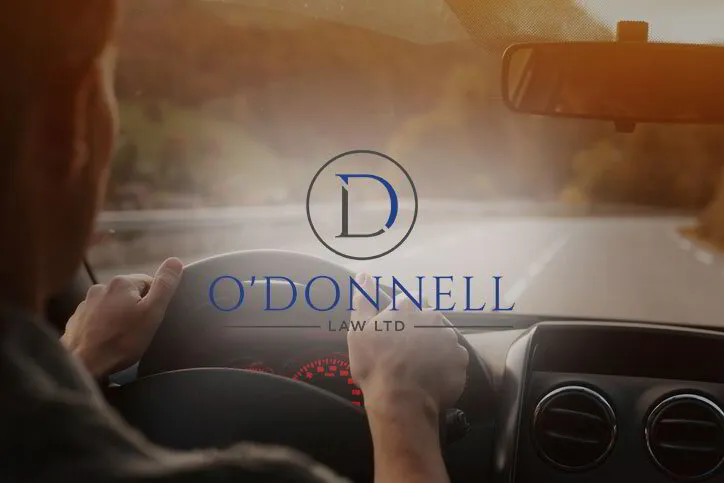Believe it or not, Illinois laws on window tinting are more complex than in other states because depending on what type of vehicle you drive, the tinting laws vary. Whether you are looking to get your windows tinted or you received a ticket for your tints and need to get in compliance, this article will help you determine the visible light transmitted percentage you will need to have legal tints.
Can I get pulled over for having tints on my windows?
Absolutely. An officer can pull you over if they believe that your tints are reflective, too dark, or if your windshield is tinted. The officer has probable cause to pull you over and check out your tint percentage. It is always a good idea to keep your receipt from your tint install as this can help the officer determine the tint percentage. If you do not know the percentage on the VLT (visible light transmittal) of the tints, the officer will have to measure your tints by using a light transmittance meter. These devices are becoming more and more popular and more police departments are handing out more tickets for illegal tints. As I heard one judge tell a defendant "I call improperly tinted windows an advertisement for officers to know they have probable cause to pull you over anytime they want". Be careful the next time you think about tinting your windows and talk to an experienced attorney to help you with your tint ticket.
How do I know if my tints are illegal?
In order to determine whether your tints are legal, Illinois uses what’s called Visible Light Transmitted (VLT) to determine the percentage of light that can go through window and glass. The darker the tint, the lower the VLT percentage, which means the less light gets through the window. When determining whether you want to get your windows tinted or see if your tints are illegal, the laws vary depending on if you are driving a passenger or multi-passenger vehicle. If you’re not sure on what type of car you’re driving, look at the federal vehicle ID label that is located on your driver’s front door frame. Remember, Illinois allows a 5% variance on these VLT percentages and talking to an attorney will help determine if you’re in violation and driving with illegal tints.
Let’s break down the tinting law by location of the window(s) on the car to help you understand the Illinois tinting.
Windshield Tinting:
Regardless if you’re driving a passenger vehicle or multi passenger car, the only portion of the windshield that may be tinted is the top six (6) inches and must be non-reflective. A passenger car includes (sedan, coupe, convertible, station wagon, hardtop, hatchback). A multi-purpose car includes (SUV, pick-up, van, RV, minibus). The point here is to have unobstructed visibility when looking through your windshield so think twice before you decide to tint your entire windshield because you will get ticketed.
Front Side Windows Tinting Law:
If you drive a passenger car (sedan, coupe, convertible, station wagon, hardtop, hatchback), your tint must be more than 35% VLT, meaning that there must be more than 35% of light that gets through the window.
If you drive a multi-purpose car (SUV, pick-up, van, RV, minibus), your tint must be at least 50% VLT, meaning that more than 50% of light that gets through the window.
Back Side Windows Tinting Law:
If you drive a passenger car (sedan, coupe, convertible, station wagon, hardtop, hatchback), your tint must be more than 35% VLT, meaning that there must be more than 35% of light that gets through the window. However, let’s say your front windows are not tinted and you only want to tint the back windows and/or rear window, there is no VLT percentage restriction. This means, you can go as dark as you want on the back window tints and not be in violation. If you drive a multi-purpose car (SUV, pick-up, van, RV, minibus), there is no restrictions on how dark or light you want to tint the windows.
Rear Window Tinting Law:
If you drive a passenger car (sedan, coupe, convertible, station wagon, hardtop, hatchback), your tints must be more than 35% VLT, meaning that there must be more than 35% of light that gets through the window.
If you drive a multi-purpose car (SUV, pick-up, van, RV, minibus), there is no restrictions on how dark or light you want to tint the windows.
Additional Tinting Laws to be aware of:
- You may install at least 35% VLT tints on all your windows, minus your windshield.
- If the front windows of your car are not tinted, you may have all the rear and back windows tinted at any VLT percentage.
- If you buy a car with factory-installed window tints of any darkness on any back and/or rear window, the front side windows must have at least 50% VLT.
- You do not need have a sticker to indicate that your window tint is legal or apply a specific tint product. You must comply with the VLT guidelines though.
- For drivers with specific medical conditions that need tinted windows over the legal VLT percentage may apply for a tinted window license plates through the Secretary of State. When we say medical condition, we don’t mean a light sensitivity condition that can be cured by wearing sunglasses or other eye protective devices. The medical conditions under the statute that allow for more VLT are: systematic or discoid lupus erythematosus, disseminated superficial actinic porokeratosis or albinism. If you have one of these conditions or live with someone with the following condition(s), and follow the guidelines of obtaining a certified letter from a physician, filing it with the Secretary of State, and renewing it every four (4) years, you are exempt from the tinting law guidelines. Don’t try and fool the Secretary of State with a false applicationfor tints as it may result in a revocation of your plates and a $500 fine.
See 625 ILCS 5/12-503(a-10)(2); 625 ILCS 5/12-503(g); 625 ILCS 5/12-503(g)(2)
What penalties do I face if I have illegal tints?
- 1st offense: petty offense with a fine between $50-$500
- 2nd offense: Class C misdemeanor with a fine between $100-$500; a Class C misdemeanor carries a maximum penalty of up to 30 days in county jail and a maximum fine of $1500 plus any mandatory court costs.
If you are convicted, it will reflect on your driving record and you must alter the tints in order to be compliant under Illinois law.
Before court, I usually tell clients to remove the tints and send me a before and after picture of the car showing the license plate to prove to the judge that the tints have been removed. Often times, this will get the ticket dismissed. Contact an experienced attorney to help you with a tinting violation.

